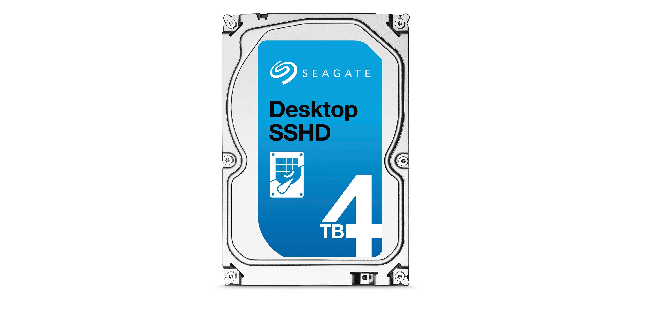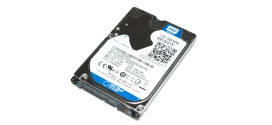PCMark Sequential Run Performance Increases
We mentioned earlier that the Seagate 4TB SSHD uses an algorithm to determine the most used files and as you use them more often they get moved to the SSD portion of the drive. PCMark 7 and 8 use three runs of each test and the results are all kept then averaged so we can show the Seagate 4TB SSHD’s performance increase across the sequential runs and if the algorithm is operating correctly we should see an increase as it progresses from run #1 to run #3.
Our First Table is PCMark 7 and as you can see as the files are used the drive gets faster as the file usage sorting algorithm gets a better idea of what you’re using.
| PCMark7 | Run 1 | Run 2 | Run 3 |
|---|---|---|---|
| Windows Defender | 1.8 MB/s | 4.7 MB/s | 5.2 MB/s |
| Importing Pictures | 8.7 MB/s | 12.3 MB/s | 12.2 MB/s |
| Video Editing | 18.9 MB/s | 21.1 MB/s | 21.4 MB/s |
| Windows Media Center | 8.2 MB/s | 8.3 MB/s | 8.5 MB/s |
| Adding Music | 1.4 MB/s | 1.5 MB/s | 1.5 MB/s |
| Starting Applications | 4.4 MB/s | 22.0 MB/s | 22.7 MB/s |
| Gaming | 5,0 MB/s | 11,0 MB/s | 12,9 MB/s |
This is the storage benchmark section of PCMark 8 and PCMark 8 reports both the speed in MB/s and seconds to completion, in this table it’s the seconds for completion and yet again the drive completes the tasks faster as the files are moved to the Nand Flash.
| PCMark 8 | Run 1 | Run 2 | Run 3 |
|---|---|---|---|
| World of Warcraft | 108.5 sec. | 96.4 sec. | 92.7 sec. |
| Battlefield 3 | 292.0 sec. | 264.2 sec. | 222.2 sec. |
| Adobe Photoshop Light | 182.7 sec. | 147.5 sec. | 124.4 sec. |
| Adobe Photoshop Heavy | 443.2 sec. | 401.3 sec. | 389.6 sec. |
| Adode InDesign | 126.2 sec. | 105.8 sec. | 89.5 sec. |
| Adobe After Effects | 120.2 sec. | 107.4 sec. | 85.3 sec. |
| Adobe Illustrator | 136.3 sec. | 93.5 sec. | 84.1 sec. |
| Microsoft Word | 42.5 sec. | 32.2 sec. | 29.6 sec. |
| Microsoft Excel | 21.8 sec. | 14.2 sec. | 10.3 sec. |
| Microsoft PowerPoint | 19.3 sec. | 11.6 sec. | 10.1 sec. |
Now we switch to the MB/s readings from PCMark 8 and across the PCMark tests we can see that as we use the files they are indeed moved to the Nand Flash the drive transfers faster.
| PCMark 8 | Run 1 | Run 2 | Run 3 |
|---|---|---|---|
| World of Warcraft | 7.6 MB/s | 9.8 MB/s | 11.2 MB/s |
| Battlefield 3 | 5.4 MB/s | 6.6 MB/s | 9.2 MB/s |
| Adobe Photoshop Light | 33.7 MB/s | 63.1 MB/s | 140.4 MB/s |
| Adobe Photoshop Heavy | 61.4 MB/s | 108.2 MB/s | 134.1 MB/s |
| Adode InDesign | 13.6 MB/s | 18.7 MB/s | 29.4 MB/s |
| Adobe After Effects | 5.3 MB/s | 8,9 MB/s | 22.4 MB/s |
| Adobe Illustrator | 7.3 MB/s | 22.4 MB/s | 38.1 MB/s |
| Microsoft Word | 13.6 MB/s | 57.8 MB/s | 62.7 MB/s |
| Microsoft Excel | 8.2 MB/s | 17.5 MB/s | 54.9 MB/s |
| Microsoft PowerPoint | 9.7 MB/s | 41.2 MB/s | 69.7 MB/s |
Keeping in mind that the Seagate 4TB SSHD isn’t about replacing a SSD backed by a platter drive which is the optimal arrangement we see in consumer computing but if you only have the cash for one or the other the Seagate 4TB SSHD is a good choice, You get the boosted speed of the SSD sorting most used files onto the Nand Flash and pretty decent platter transfer rates to boot, Later when you have your war chest refilled you can toss an SSD in front of the Seagate SSHD and have a better drive arrangement than just a SSD in front of a normal platter drive.
 Bjorn3D.com Bjorn3d.com – Satisfying Your Daily Tech Cravings Since 1996
Bjorn3D.com Bjorn3d.com – Satisfying Your Daily Tech Cravings Since 1996








Sounds like a great drive but…an decent 120/240gb SSD and a 3+tb storage disk is almost the same price and gives you much much faster performance??